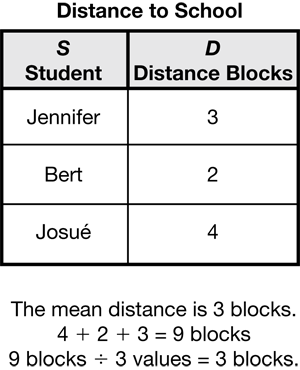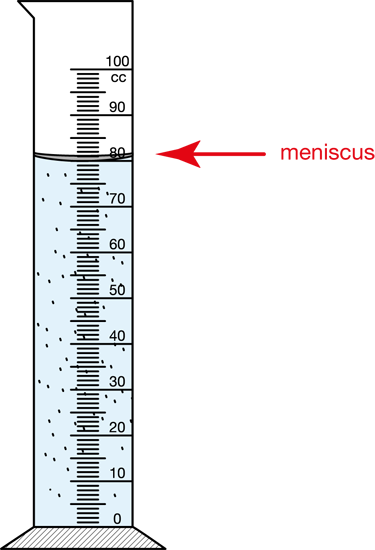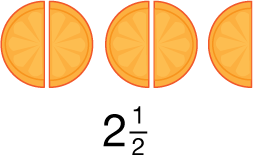M
magic square
A square array of digits in which the sums of the rows, columns, and main diagonals are the same.

pages 24–39
making-ten strategy
Strategy for addition and subtraction that makes use of knowing the sums of ten. For example, knowing 6 + 4 = 10 can be helpful in finding 10 − 6 = 4 and 11 − 6 = 5.
page 18
manipulated variable
The variable with values known at the beginning of the experiment. The experimenter often chooses these values before data is collected. The manipulated variable is often called the independent variable.
mass
The amount of matter in an object.
pages 348–353, 354–359, 360–361
mathhoppers
Mathhoppers are special creatures that move on number lines. Mathhoppers move forward and backward on the number line. Some mathhoppers are constant hoppers and they always jump the same size hop.
(See also base-ten hoppers and constant hopper.)

page 86
mean
An average of a set of numbers that is found by adding the values of the data and dividing by the number of values.

measurement division
Division as equal grouping. The total number of objects and the number of objects in each group are known. The number of groups is the unknown. For example, tulip bulbs come in packages of 8. If 216 bulbs are sold, how many packages are sold?
(See also partitive division.)
measurement error
The error that occurs because measurement tools are not exact. The experimenter follows good procedure but cannot avoid the error.
median
An average of a set of data values that is found by identifying the middle value. For a set with an odd number of data arranged in order, it is the middle number. For an even number of data arranged in order, it is the number halfway between the two middle numbers.

page 407
meniscus
The curved surface formed when a liquid creeps up the side of a container (for example, a graduated cylinder).

page 402
mental math
Any strategy that uses reasoning rather than a set procedure. A few notes or tools like number lines may still be used. For example: To solve 99 − 4, I thought about the problem as 100 − 4 − 1. Another example:

pages 127–128, 135–136
meter
A unit of length in the metric system. One meter is 100 centimeters or a little more than 39 inches.
pages 155, 266–280, 326
milliliter
A measure of volume in the metric system that is the volume of a cube that is one centimeter long on each edge.
page 401
minute
60 seconds.
pages 66, 68, 96–98, 150–154, 300–302
minute hand
The large hand on a clock that indicates the minutes past the hour.
pages 96–98, 150–154, 300–302
mixed numbers
Numbers consisting of a whole number and a fraction (e.g., 2

mode
The answer or number that occurs the most amount of times in a dataset.
multiple
The product of a number and another number. For example, 15, 25, and 40 are multiples of 5 (5 × 3 = 15, 5 × 5 = 25, 5 × 8 = 40). A number is a multiple of another number if it is evenly divisible by that number. For example, 12 is a multiple of 2 since 2 divides 12 evenly.
pages 64–65, 234–236
multiplication
An operation for combining two numbers that is more efficient than repeated addition (e.g., 4 × 2 = 2 + 2 + 2 + 2).
pages 52–53, 54–57, 58–61, 62–63, 64–65, 66–68, 216–233, 237–242, 282–283, 284–286, 287–289, 290–292, 293, 294–295, 296–297, 364–365, 366–369, 370–372, 373–376
multiplication table
A table showing all the multiplication facts from 0 × 0 to 10 × 10.

pages 203–206, 207, 234
multiply
A mathematical operation where a number is added to itself a number of times (e.g., 5 × 3 = 5 + 5 + 5 or 3 + 3 + 3 + 3 + 3).
pages 52–53, 54–57, 58–61, 62–63, 64–65, 66–68, 216–233, 237–242, 282–283, 284–286, 287–289, 290–292, 293, 294–295, 296–297, 364–365, 366–369, 370–372, 373–376










